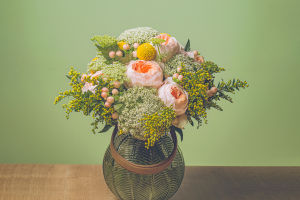Did you know? Essential oils are not oils!
What we commonly call oils are made up of "fatty acids" and cannot be dissolved in alcoholic essential oils.
Natural essential oils are aromatic substances extracted from the roots, stems, leaves, trunks, flowers, or fruits of natural plants, and are composed of "organic compounds" produced by photosynthesis in plants.
The five most common types of essential oils
1. Flowers and fruits: including lavender, chamomile, sweet orange essential oil, etc., have a soothing effect on the body and mind, lifting the spirit
2. Herbs: contains tea tree, eucalyptus, fir essential oil, etc., has a refreshing, mosquito repellent effect
3. Resin: contains frankincense, myrrh, rock rose essential oil, etc., to improve the respiratory system, and meditation effect
4. Seeds: Contains cardamom, fennel essential oil, etc., to strengthen resistance and help digestion
5. Root: Contains ginger and vetiver essential oils, which have a calming and soothing effect on the nervous system
After learning about the different types of essential oils, let's look at the different ways to extract essential oils!
3 common methods of essential oil extraction:
1. Cold pressing
In the process without using any heat source, the use of pressing the peel or pulp and adding water to the juice, and then separating the essential oil by centrifugal force, commonly used in citrus fruit extraction.
2. Steam distillation
The oldest and most common method of essential oil extraction is suitable for plants that are more resistant to heat and will not be affected by temperature and destroy the ingredients.
3. Solvent extraction
Mostly used for fragile and delicate flowers that are not heat resistant and cannot be extracted by steam distillation.
Chemical solvents, carbon dioxide, vegetable oils, and animal oils are used to extract the essence of the plant, and then the original essence is isolated through multiple filtration and low-temperature distillation.
How to use essential oils?
1. Scenting
Place a few drops of essential oil on a handkerchief or toilet paper and hold it close to your nose to breathe in the essential oil molecules to achieve the effect.
2. Diffusion
Diffusers, bottles, and stones can be used to diffuse essential oils and gradually fill the air with essential oil molecules to relieve stress.
3. Bathing
Add 4-6 drops of essential oils to your bath or apply a small amount to your body to relieve fatigue and improve blood circulation.
4. Massage
The use of essential oils in massage can help to reduce the pain of body massage as well as relieve mental stress and fatigue, whether it is a full-body, half-body, or foot massage.
Special reminder, some of the essential oils are more irritating to the skin, please confirm the type and concentration of essential oil safety, according to professional instructions to use, if there is discomfort should also immediately stop using and consult the doctor's advice.


